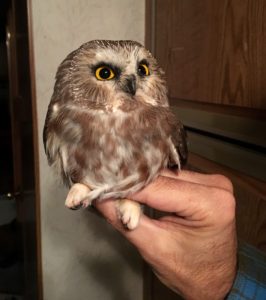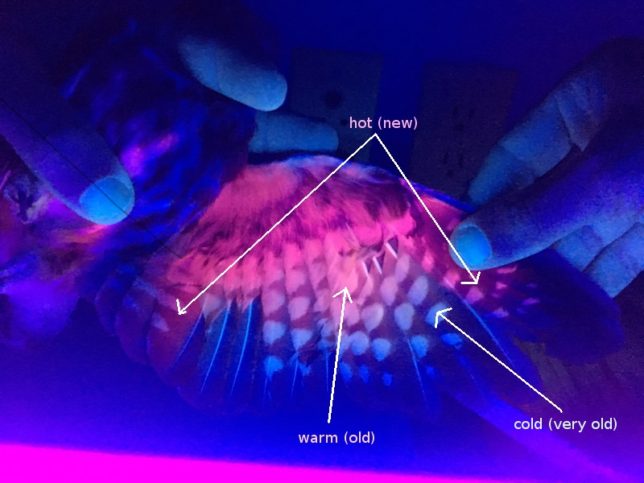Alas, the storm fronts never did fizzle out, but despite the less-than-ideal conditions, we did catch one saw-whet owl on the night of September 22nd.

After examining old and new flight feathers on her wings, I aged this saw-whet to be an after second year (ASY), meaning she is at least 2.5 years old.
Every year, saw-whets will symmetrically replace some old flight feathers with crisp new ones. Therefore, we can age a bird by the number of generations of flight feathers present. Just going off the naked eyeball, it can be tough to gauge which feathers are really old, old, and new! But fortunately, a pigment in flight feathers, called porphyrin, readily glows under black light. As feathers age, so does porphyrin, and thus older feathers glow dimly, whereas fresh feathers glow brightly.

It could be that Miss 094 was born in the spring of 2016, and in that summer fledged with her first set of flight feathers, which she has steadily replaced over subsequent summers.
As the season progresses, I’ll nab more black lighting photos to share! Precise aging of saw-whets by molt limits is still a developing science, which is very exciting!
-MH
